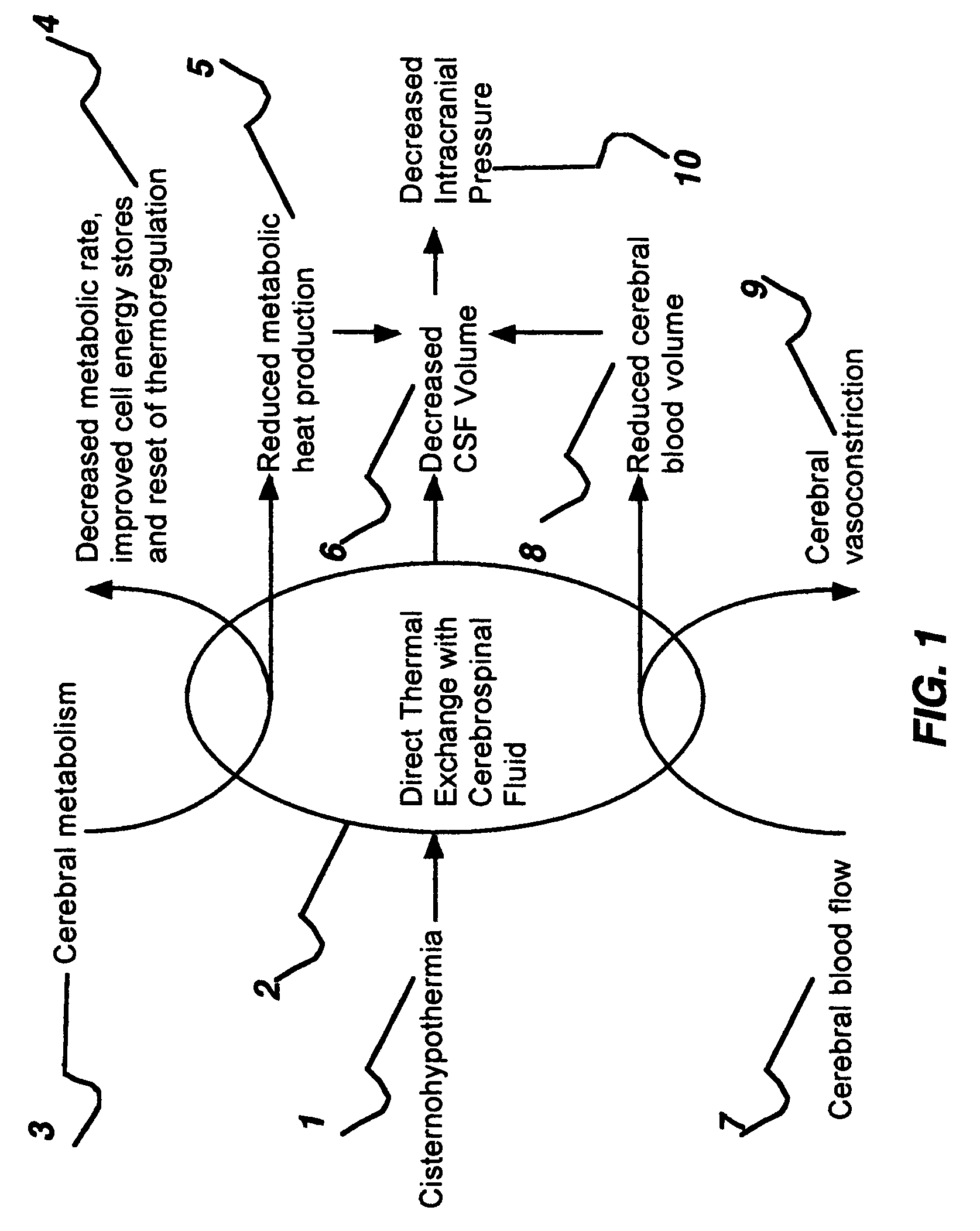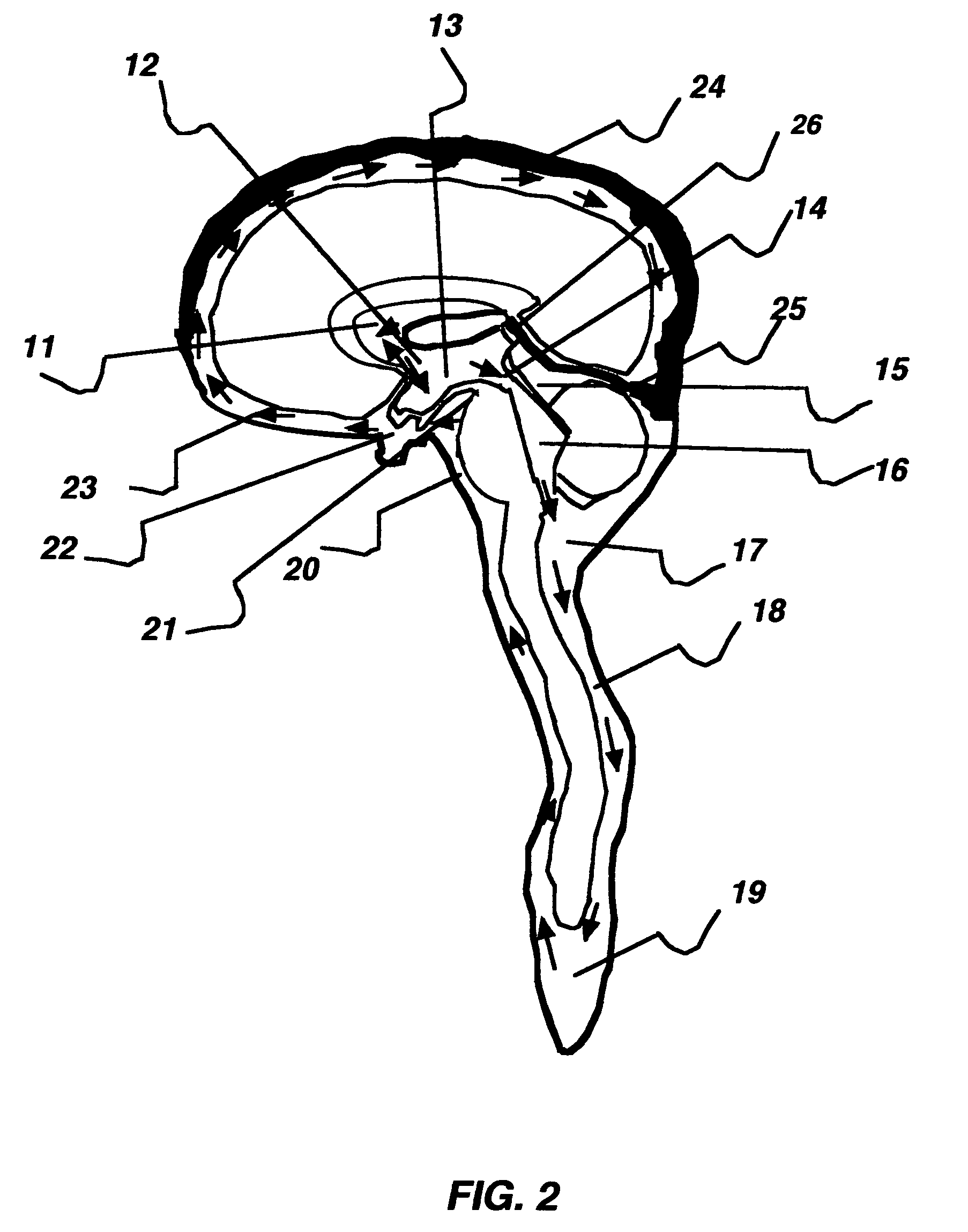Apparatus and method for hypothermia and rewarming by altering the temperature of the cerebrospinal fluid in the brain
a cerebrospinal fluid and hypothermia technology, applied in the field of selective modification and control of the body temperature of patients, can solve the problems of neurological deficits, serious and potentially fatal hyperthermia, and abnormal body temperature, and achieve the effects of reducing the risk of frostbite, pneumonia or other thermal injury, and selective cooling of the brain
- Summary
- Abstract
- Description
- Claims
- Application Information
AI Technical Summary
Benefits of technology
Problems solved by technology
Method used
Image
Examples
Embodiment Construction
[0074]FIG. 1 shows the mechanism of transfer of heat to the CSF. As mentioned above, the method of application of cooling to lower the temperature of the CSF and is hereby referred to as ‘cisternohypothermia’. Such a system 1 (cisternohypothermia) would have direct thermal exchange with the CSF compartment 2 cooling the CSF bathing the neural tissue and altering cerebral metabolism 3 by reducing cerebral metabolic rate 4 in neural cells, thereby conserving energy stores in cells. This will alter the balance between heat gain and heat loss following purely physicochemical considerations, however, this will also ultimately reset the thermoregulation by direct effects on neurons of central and peripheral afferents to the preoptic hypothalamus. There is a culminative effect of reduced metabolic heat production 5 and further cooling of the CSF and blood. The heat loss effect on the physical fluid characteristics of the CSF would cause a decreased CSF volume 6 and hence reduced intracrani...
PUM
 Login to View More
Login to View More Abstract
Description
Claims
Application Information
 Login to View More
Login to View More - R&D
- Intellectual Property
- Life Sciences
- Materials
- Tech Scout
- Unparalleled Data Quality
- Higher Quality Content
- 60% Fewer Hallucinations
Browse by: Latest US Patents, China's latest patents, Technical Efficacy Thesaurus, Application Domain, Technology Topic, Popular Technical Reports.
© 2025 PatSnap. All rights reserved.Legal|Privacy policy|Modern Slavery Act Transparency Statement|Sitemap|About US| Contact US: help@patsnap.com



